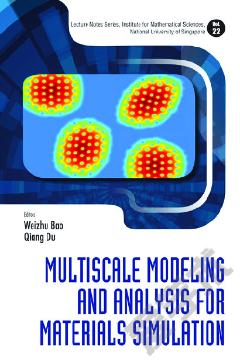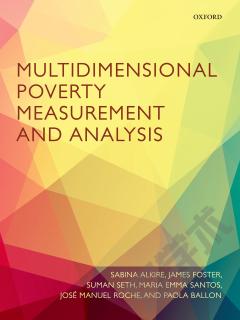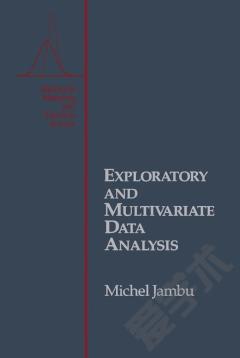Multiscale Analysis of Deformation and Failure of Materials
About the Author. Series Preface. Preface. Abbreviations. 1 Introduction. 1.1 Material Properties Based on Hierarchy of Material Structure. 1.2 Overview of Multiscale Analysis. 1.3 Framework of Multiscale Analysis Covering a Large Range of Spatial Scales. 1.4 Examples in Formulating Multiscale Models from Practice. 1.5 Concluding Remarks. References. 2 Basics of Atomistic Simulation. 2.1 The Role of Atomistic Simulation. 2.2 Interatomic Force and Potential Function. 2.3 Pair Potential. 2.4 Numerical Algorithms for Integration and Error Estimation. 2.5 Geometric Model Development of Atomistic System. 2.6 Boundary Conditions. 2.7 Statistical Ensembles. 2.8 Energy Minimization for Preprocessing and Statistical Mechanics Data Analyses. 2.9 Statistical Simulation Using Monte Carlo Methods. 2.10 Concluding Remarks. References. 3 Applications of Atomistic Simulation in Ceramics and Metals. Part 3.1 Applications in Ceramics and Materials with Ionic and Covalent Bonds. 3.1 Covalent and Ionic Potentials and Atomistic Simulation for Ceramics. 3.2 Born Solid Model for Ionic-bonding Materials. 3.3 Shell Model. 3.4 Determination of Parameters of Short-distance Potential for Oxides. 3.5 Applications in Ceramics: Defect Structure in Scandium Doped Ceria Using Static Lattice Calculation. 3.6 Applications in Ceramics: Combined Study of Atomistic Simulation with XRD for Nonstoichiometry Mechanisms in Y3Al5O12 (YAG) Garnets. 3.7 Applications in Ceramics: Conductivity of the YSZ Oxide Fuel Electrolyte and Domain Switching of Ferroelectric Ceramics Using MD. 3.8 Tersoff and Brenner Potentials for Covalent Materials. 3.9 The Atomistic Stress and Atomistic-based Stress Measure. Part 3.2 Applications in Metallic Materials and Alloys. 3.10 Metallic Potentials and Atomistic Simulation for Metals. 3.11 Embedded Atom Methods EAM and MEAM. 3.12 Constructing Binary and High Order Potentials from Monoatomic Potentials. 3.13 Application Examples of Metals: MD Simulation Reveals Yield Mechanism of Metallic Nanowires. 3.14 Collecting Data of Atomistic Potentials from the Internet Based on a Specific Technical Requirement. Appendix 3.A Potential Tables for Oxides and Thin-Film Coating Layers. References. 4 Quantum Mechanics and Its Energy Linkage with Atomistic Analysis. 4.1 Determination of Uranium Dioxide Atomistic Potential and the Significance of QM. 4.2 Some Basic Concepts of QM. 4.3 Postulates of QM. 4.4 The Steady State Schr odinger Equation of a Single Particle. 4.5 Example Solution: Square Potential Well with Infinite Depth. 4.6 Schr odinger Equation of Multi-body Systems and Characteristics of its Eigenvalues and Ground State Energy. 4.7 Three Basic Solution Methods for Multi-body Problems in QM. 4.8 Tight Binding Method. 4.9 Hartree-Fock (HF) Methods. 4.10 Electronic Density Functional Theory (DFT). 4.11 Brief Introduction on Developing Interatomic Potentials by DFT Calculations. 4.12 Concluding Remarks. Appendix 4.A Solution to Isolated Hydrogen Atom. References. 5 Concurrent Multiscale Analysis by Generalized Particle Dynamics Methods. 5.1 Introduction. 5.2 The Geometric Model of the GP Method. 5.3 Developing Natural Boundaries Between Domains of Different Scales. 5.4 Verification of Seamless Transition via 1D Model. 5.5 An Inverse Mapping Method for Dynamics Analysis of Generalized Particles. 5.6 Applications of GP Method. 5.7 Validation by Comparison of Dislocation Initiation and Evolution Predicted by MD and GP. 5.8 Validation by Comparison of Slip Patterns Predicted by MD and GP. 5.9 Summary and Discussions. 5.10 States of Art of Concurrent Multiscale Analysis. 5.11 Concluding Remarks. References. 6 Quasicontinuum Concurrent and Semi-analytical Hierarchical Multiscale Methods Across Atoms/Continuum. 6.1 Introduction. Part 6.1 Basic Energy Principle and Numerical Solution Techniques in Solid Mechanics. 6.2 Principle of Minimum Potential Energy of Solids and Structures. 6.3 Essential Points of Finite Element Methods. Part 6.2 Quasicontinuum (QC) Concurrent Method of Multiscale Analysis. 6.4 The Idea and Features of the QC Method. 6.5 Fully Non-localized QC Method. 6.6 Applications of the QC Method. 6.7 Short Discussion about the QC Method. Part 6.3 Analytical and Semi-analytical Multiscale Methods Across Atomic/Continuum Scales. 6.8 More Discussions about Deformation Gradient and the Cauchy-Born Rule. 6.9 Analytical/Semi-analytical Methods Across Atom/Continuum Scales Based on the Cauchy-Born Rule. 6.10 Atomistic-based Continuum Model of Hydrogen Storage with Carbon Nanotubes. 6.11 Atomistic-based Model for Mechanical, Electrical and Thermal Properties of Nanotubes. 6.12 A Proof of 3D Inverse Mapping Rule of the GP Method. 6.13 Concluding Remarks. References. 7 Further Introduction to Concurrent Multiscale Methods. 7.1 General Feature in Geometry of Concurrent Multiscale Modeling. 7.2 Physical Features of Concurrent Multiscale Models. 7.3 MAAD Method for Analysis Across ab initio, Atomic and Macroscopic Scales. 7.4 Force-based Formulation of Concurrent Multiscale Modeling. 7.5 Coupled Atom Discrete Dislocation Dynamics (CADD) Multiscale Method. 7.6 1D Model for a Multiscale Dynamic Analysis. 7.7 Bridging Domains Method. 7.8 1D Benchmark Tests of Interface Compatibility for DC Methods. 7.9 Systematic Performance Benchmark of Most DC Atomistic/Continuum Coupling Methods. 7.10 The Embedded Statistical Coupling Method (ESCM). References. 8 Hierarchical Multiscale Methods for Plasticity. 8.1 A Methodology of Hierarchical Multiscale Analysis Across Micro/meso/macroscopic Scales and Information Transformation Between These Scales. 8.2 Quantitative Meso-macro Bridging Based on Self-consistent Schemes. 8.3 Basics of Continuum Plasticity Theory. 8.4 Internal Variable Theory, Back Stress and Elastoplastic Constitutive Equations. 8.5 Quantitative Micro-meso Bridging by Developing Meso-cell Constitutive Equations Based on Microscopic Analysis. 8.6 Determining Size Effect on Yield Stress and Kinematic Hardening Through Dislocation Analysis. 8.7 Numerical Methods to Link Plastic Strains at the Mesoscopic and Macroscopic Scales. 8.8 Experimental Study on Layer-thickness Effects on Cyclic Creep (Ratcheting). 8.9 Numerical Results and Comparison Between Experiments and Multiscale Simulation. 8.10 Findings in Microscopic Scale by Multiscale Analysis. 8.11 Summary and Conclusions. Appendix 8.A Constitutive Equations and Expressions of Parameters. Appendix 8.B Derivation of Equation (8.12e) and Matrix Elements. References. 9 Topics in Materials Design, Temporal Multiscale Problems and Bio-materials. Part 9.1 Materials Design. 9.1 Multiscale Modeling in Materials Design. Part 9.2 Temporal Multiscale Problems. 9.2 Introduction to Temporal Multiscale Problems. 9.3 Concepts of Infrequent Events. 9.4 Minimum Energy Path (MEP) and Transition State Theory in Atomistic Simulation. 9.5 Applications and Impacts of NEB Methods. Part 9.3 Multiscale Analysis of Protein Materials and Medical Implant Problems. 9.6 Multiscale Analysis of Protein Materials. 9.7 Multiscale Analysis of Medical Implants. 9.8 Concluding Remarks. Appendix 9A Derivation of Governing Equation (9.11) for Implicit Relationship of Stress, Strain Rate, Temperature in Terms of Activation Energy and Activation Volume. References. 10 Simulation Schemes, Softwares, Lab Practice and Applications. Part 10.1 Basics of Computer Simulations. 10.1 Basic Knowledge of UNIX System and Shell Commands. 10.2 A Simple MD Program. 10.3 Static Lattice Calculations Using GULP. 10.4 Introduction of Visualization Tools and Gnuplot. 10.5 Running an Atomistic Simulation Using a Public MD Software DL-POLY. 10.6 Nve and npt Ensemble in MD Simulation. Part 10.2: Simulation Applications in Metals and Ceramics by MD. 10.7 Non-equilibrium MD Simulation of One-phase Model Under External Shearing (1). 10.8 Non-equilibrium MD Simulation of a One-phase Model Under External Shearing (2). 10.9 Non-equilibrium MD Simulation of a Two-phase Model Under External Shearing. Part 10.3: Atomistic Simulation for Protein-Water System and Brief Introduction of Large-scale Atomic/Molecular System (LAMMPS) and the GP Simulation. 10.10 Using NAMD Software for Biological Atomistic Simulation. 10.11 Stretching of a Protein Module (1): System Building and Equilibration with VMD/NAMD. 10.12 Stretching of a Protein Module (2): Non-equilibrium MD Simulation with NAMD. 10.13 Brief Introduction to LAMMPS. 10.14 Multiscale Simulation by Generalized Particle (GP) Dynamics Method. Appendix 10.A Code Installation Guide. Prerequisites. 10.A.1 Introduction. 10.A.2 Using the KNOPPIX CD to Install the GNU/Linux System. 10.A.3 ssh and scp. 10.A.4 Fortran and C Compiler. 10.A.5 Visual Molecular Dynamics (VMD). 10.A.6 Installation of AtomEye. Appendix 10.B Brief Introduction to Fortran 90. 10.B.1 Program Structure, Write to Terminal and Write to File. 10.B.2 Do Cycle, Formatted Output. 10.B.3 Arrays and Allocation. 10.B.4 IF THEN ELSE. Appendix 10.C Brief Introduction to VIM. 10.C.1 Introduction. 10.C.2 Simple Commands. Appendix 10.D Basic Knowledge of Numerical Algorithm for Force Calculation. 10.D.1 Force Calculation in Atomistic Simulation. Appendix 10.E Basic Knowledge of Parallel Numerical Algorithm. 10.E.1 General Information. 10.E.2 Atom Decomposition. 10.E.3 Force Decomposition. 10.E.4 Domain Decomposition. Appendix 10.F Supplemental Materials and Software for Geometric Model Development in Atomistic Simulation. 10.F.1 Model Development for Model Coordinates Coincident with Main Crystal Axes. 10.F.2 Model Development for Model Coordinates not Coincident with Crystal Axes. References. Postface. Index.
{{comment.content}}








 京公网安备 11010802027623号
京公网安备 11010802027623号